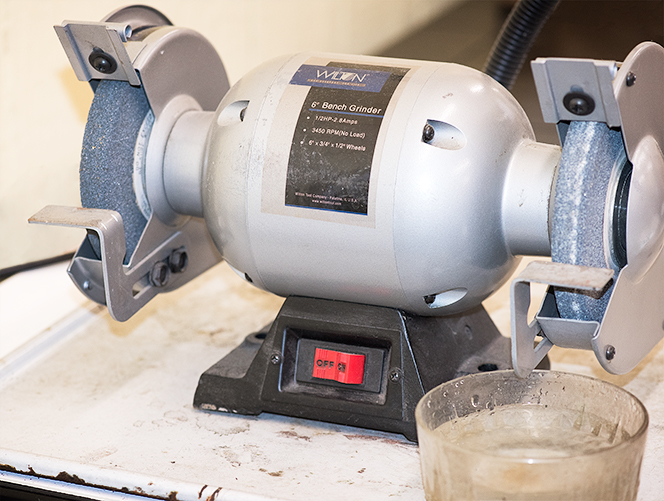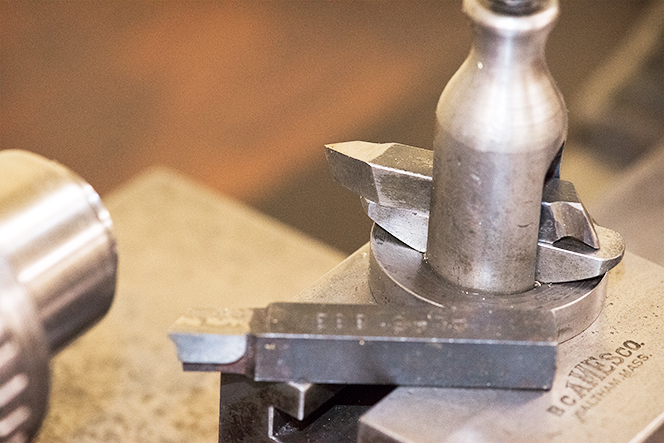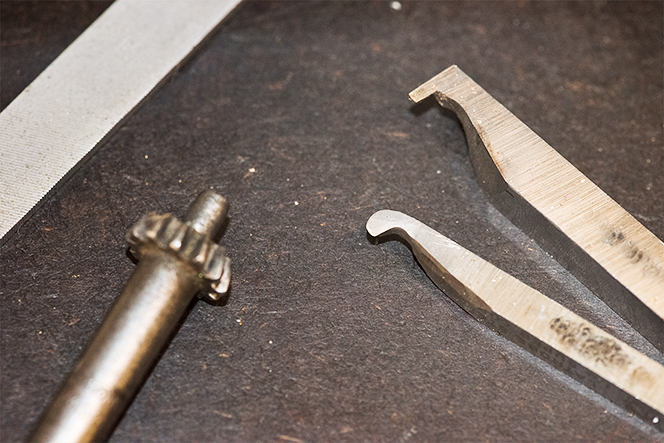Of the many facets involved in jewelry making, artistry is the most important element. A wide variety of technical skills must also be honed and developed as well. In my previous post I wrote about tool making in regard to wax carving. Today I will discuss the cutting tools used for machining on a lathe.
There are naturally a handful of standard and quite versatile shapes for cutting tools that prove invaluable. Upon inheriting my lathe I also acquired a plethora of both high speed steel and carbide cutters in standard shapes. In addition, there were a number of high-speed steel blanks.
The project or artistic vision at hand naturally dictates exactly what is required to create it. Occasionally new implements must be formed first in order to complete a project. Shaping cutting tools is actually quite simple, it only requires a little time and either a degree of patience or as I would call it, an understanding of process.
A grinding wheel with an abrasive stone wheel works wonderfully to shape steel. The sparks will fly, and it is important to keep some water on hand. The water is not a precaution against these sparks; they are quite harmless. It is rather to quench the developing tool at frequent intervals. In shaping the blank it will get burning hot and fast! In working with metal, melting, soldering, brazing, etc. rarely result in burns. Obvious common sense tells us where to point a torch. In polishing and grinding however, metal will go from warm to searing in a split second. Experience helps us to learn the nature of metal and the rapidity of the heat it will conduct.

I think many artisans would agree that the importance of your craft and the end results of your endeavors far outweigh personal comfort. It is never pleasant to be burnt, but ruining what you work diligently to create is often far worse. In the case of a tool, it is not exactly devastating to scrap your work and begin fresh, but remains frustrating and time consuming. When the temperature of the steel begins to rise, as I describe, it will begin to change color once it gets hot enough. This change in color indicates that the metal is being annealed, or softened. As your parts become smaller the risk of annealing them becomes exponentially higher. Fortunately consistent quenching alleviates the risks of both getting burnt and weakening the edge of your evolving tool.
As for the shape of the tools you will create, the skies the limit! I have a couple of cutters that I made specifically for hollowing out objects. My lathe is quite old and the compound rest does not have a protractor to adjust the axis. As a result I must take this into account when crafting tools and it is no hindrance whatsoever with well designed cutters.
I consider tool making to be a basic and essential element of machining. I would imagine most machinists make many of their own cutters, as it is a simple process and imparting your own personal touch allows for complete customization.

